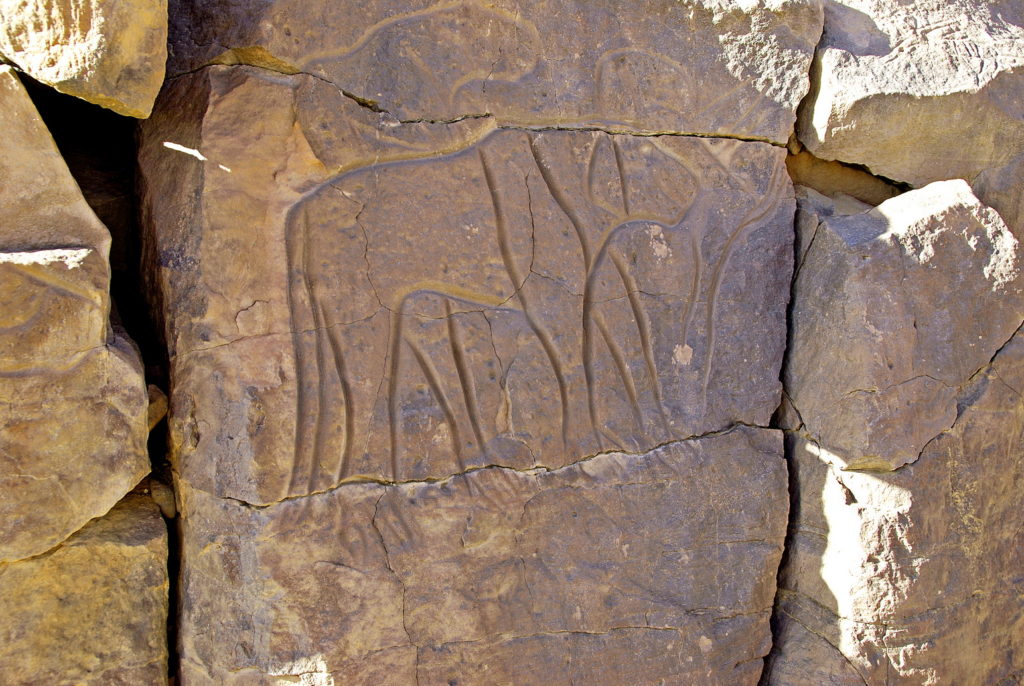Bubaline petroglyphs

Wadi Mathendous, Messak Settafet (Libya)
According to the classical sequence the Bubaline is considered the earliest period and style of the Central Saharan rock art. It is called after the Bubalus (Pelorovis resp. Syncerus, before Homoioceras) antiquus, a large African buffalo, which is representative of this style. This imposing animal with its metre long horns was indigenous to the North-African region in the Late Pleistocene and in the Early Holocene and it became extinct at around 5,000 BP. Petroglyphs and very rare Bubalus paintings are large, naturalistic depictions of animals made as static profiles,picked and ground with deeply incised and polished lines. In addition to this buffalo, other selected species of wild fauna are represented, mainly elephant, giraffe, hippopotamus, crocodile and aurochs.
Less numerous are anthropomorphic representations of apparently male figures holding clubs, axes and sometimes bows. They are presented disproportionately small either in front of or behind animals, suggesting inferior importance.
The main concentrations of this style are outside the area dominated by the Round Head paintings, mainly in the Wadi Djerat in the northern Tassili and on the Messak Plateau east of the Acacus. The Bubaline petroglyphs are not only in a different location and utilize a different technique, but also they seem to have nothing in common with the Round Head artistic tradition. Bubaline style is dominated by representations of large or otherwise powerful animals, whereas in the Round Head style human figures and mouflon/antelope prevail.
Bibliography (selection):
Lutz, R. & Lutz, G. (1995) The secret of the desert. The rock-art of Messak Settafet and Messak Mellet, Libya (Insbruck: Umversitatbuchhandlung, Golf Verlag).
Lutz, R. & Lutz, G. (1996) The Bubalus rock of Wadi in Elobu. A chronological indicator of early rock art in the Messak Sattafet and Messak Mellet, Fezzan, Libya, Colloquium 29:137-150.
Le Quellec, J. C. (2006) Rock art and cultural responses to climatic changes in the central Sahara during the Holocene. In P. Ch. Reddy (ed.) Exploring the Mind of Ancient Man (Festschrift to Robert Bednarik) (New Delhi: Research India Press) 173 – 188.
Mattingly, D. J. (ed.)(2003) The archaeology of Fazzan. Volume 1. Synthesis (Tripoli/London: The Department of Antiquities & The Society for Libyan Studies).
Van Albada, A. & Van Albada, A. M. (1990) Gravures du Messak Settafet (Fezzan, Libye), Sahara 3: 89-94.